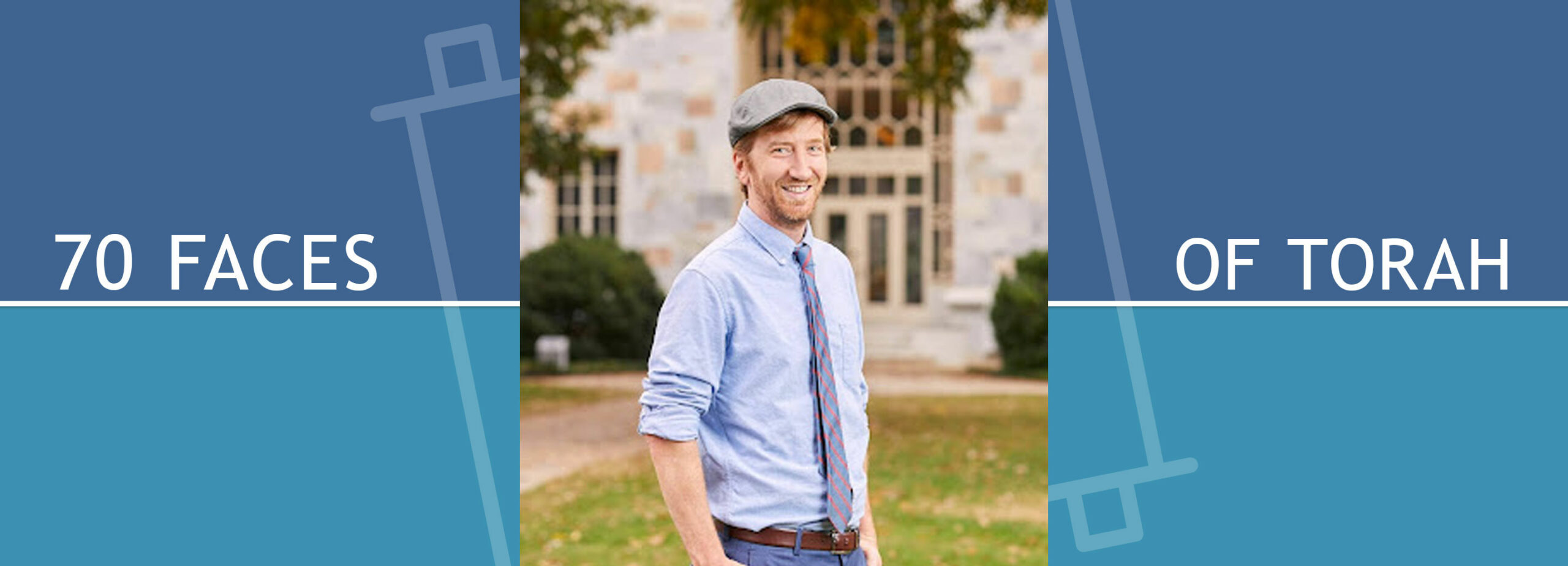Leviticus Dressing Towards Holiness

Parashat Acharei Mot Exodus 6:2-9:35
There is a familiarity to the unfolding ritual found in this week’s parashah, Acharei Mot. Much of it, detailing the actions and choreography of the high priest on Yom Kippur is recounted each year on our holiest day. The strangeness of the ritual, the sprinkling of blood, the laying of hands on a goat, the donning of ritual garb, offers an ancient backdrop to our very modern account-taking. When the holiday is done right, each of us becomes like the kohen gadol (high priest), seeking a sense of nearness to the Divine and, through it, hopefully, a slate wiped clean.
Yet, this year, reading through the parashah, I was reminded not of Yom Kippur but, instead, of the burial rituals carefully carried out by a chevra kadisha, a holy burial society. In this setting, preparing a body for burial, the image of the high priest is called upon as well. Invoking words from this week’s parashah, every person is cleansed and dressed for communion with the Holy One of Blessing.
כְּתֹנֶת־בַּד קֹדֶשׁ יִלְבָּשׁ וּמִכְנְסֵי־בַד יִהְיוּ עַל־בְּשָׂרוֹ וּבְאַבְנֵט בַּד יַחְגֹּר וּבְמִצְנֶפֶת בַּד יִצְנֹף בִּגְדֵי־קֹדֶשׁהֵם וְרָחַץ בַּמַּיִם אֶת־בְּשָׂרוֹ וּלְבֵשָׁם
He will wear a holy linen shirt, and linen pants will be upon his flesh, and he will gird himself with a linen sash and wear a linen turban; these are holy garments. So, he shall immerse himself in water and don them.
I remember my first evening participating in the ritual of tahara (preparation for burial) as part of the Community Chevra Kadisha in Boston. Walking down the carpeted stairs of the funeral home, the cool blast of air-conditioning, an intertwining sense of nervousness and purpose; each feeling and sensation picked up and pocketed, stored away for later reflection, as I readied myself for the task at hand. And then, entering the room, fluorescent light, cement floor, steel table, still empty, awaiting the body of the meit (the deceased) and the ancient rites to come.
What followed was one of the most embodied, intimate and caring rituals that I’d ever taken part in. The careful regard in handling the deceased, the gentle cleaning of the body, the synchronized pouring of water. Each element, performed with kavanah, a deep sense of intention; all carried out with the utmost respect and love for the individual before us. Yet, when I look back on that first tahara, it was the dressing of the meit that I recall most vividly. Reciting the instructions for the high priest…
כְּתֹנֶת־בַּד קֹדֶשׁ יִלְבָּשׁ
He will wear a holy linen shirt.
…we placed the linen shirt over the head of the individual, and then began the challenging task of dressing a body that was empty of life. At this particular moment in time, my kids were all six or seven and under. Helping people get dressed was a regular part of my daily life. I was struck by the ways in which muscle memory kicked in; reaching through the sleeve I gently grasped the hand of the meit and guided it through the garment. The act of dressing someone was so familiar that I recall a flood of emotion in the moment. Pulling the shirt down, legs through pants, tying of knots, each step of the dressing connecting back to the linen garb of the kohen gadol, preparing to enter the Holy of Holies.
It is worth noting that the high priest had a more elaborate attire than the simple garments worn on Yom Kippur. The Torah goes into great detail, describing the golden vestments, the elaborate breastplate, the bells and pomegranates for service in the tabernacle. Yet, entering into the space of greatest holiness and significance, it is the four-piece linen garb that is donned. Rashi points out,
מַגִּיד שֶׁאֵינוֹ מְשַׁמֵּשׁ לִפְנִים בִּשְׁמוֹנָה בְגָדִים שֶׁהוּא מְשַׁמֵּשׁ בָּהֶן בַּחוּץ
This teaches that he doesn’t perform on the Interior with the eight garments that he uses on the Exterior.
I am drawn to the interplay between the interior and the exterior, the private and the public, what we live in and what we are buried in. The high priest does not need any sign of status within the inner chambers of the mishkan. The simple, linen garments are enough. So too, in our dying, and in coming to rest in the embrace of our holy earth, we choose to wear only the tachrichim, the white, linen funeral shrouds. Yet, in my opinion, it is not the clothing that is sacred. Rather, the act of dressing the other, the love and familiarity and care, that is where the holiness lies. In my own life, we are beyond the days of helping little ones into clothing, but perhaps in the sacred work of reaching out to others, we can extend our circles of care and compassion. The Torah arrives at this moment to assert that in life and in death, each human being has the holiness of the high priest: the garb is just a reminder of the sacred spark within.
Rabbi Jordan Braunig serves as a campus rabbi and the Jewish chaplain at Emory University in Atlanta, GA. A spiritual fellow-traveler, his rabbinate is centered on helping those he encounters connect to community, to Jewish traditions and, G-d-willing, to themselves. Jordan was ordained by Hebrew College in 2014.

